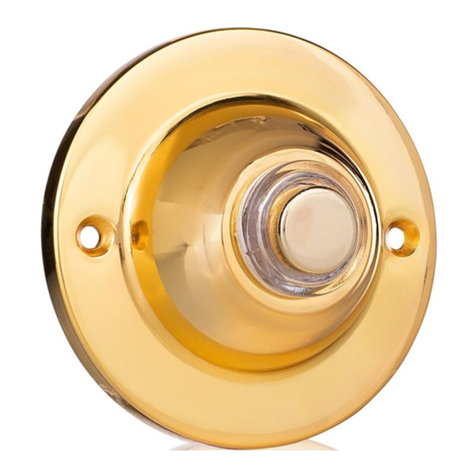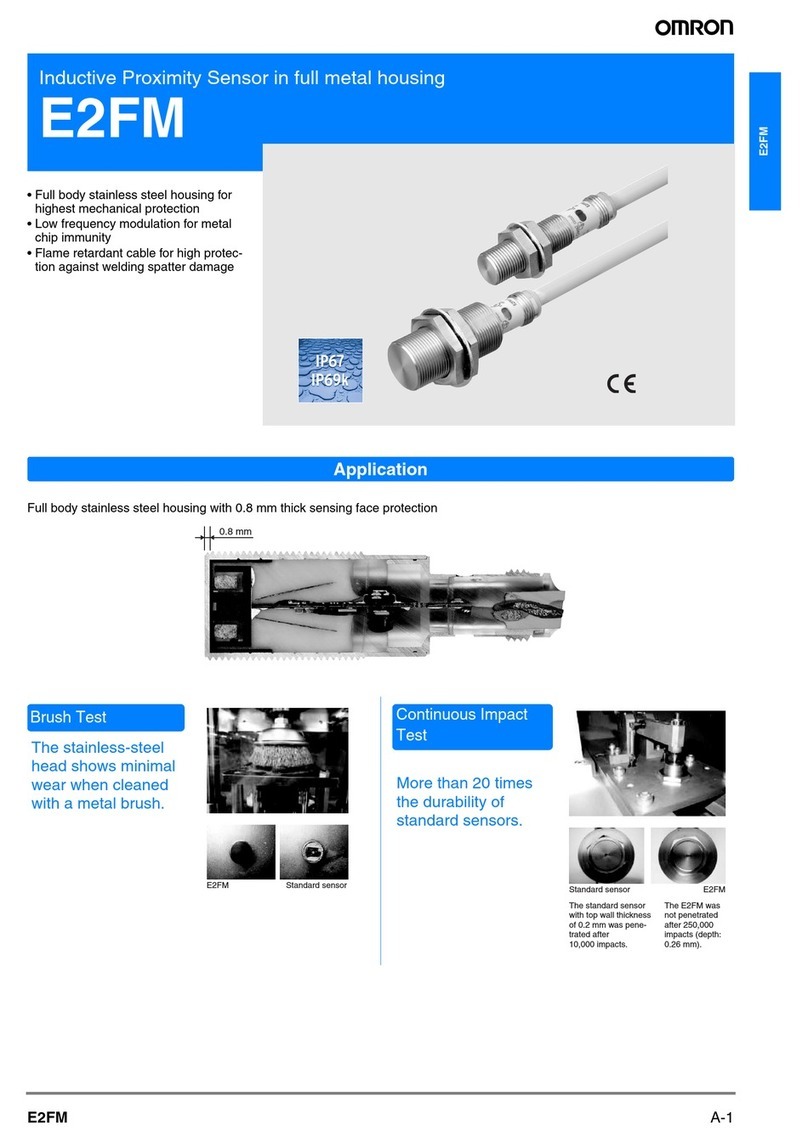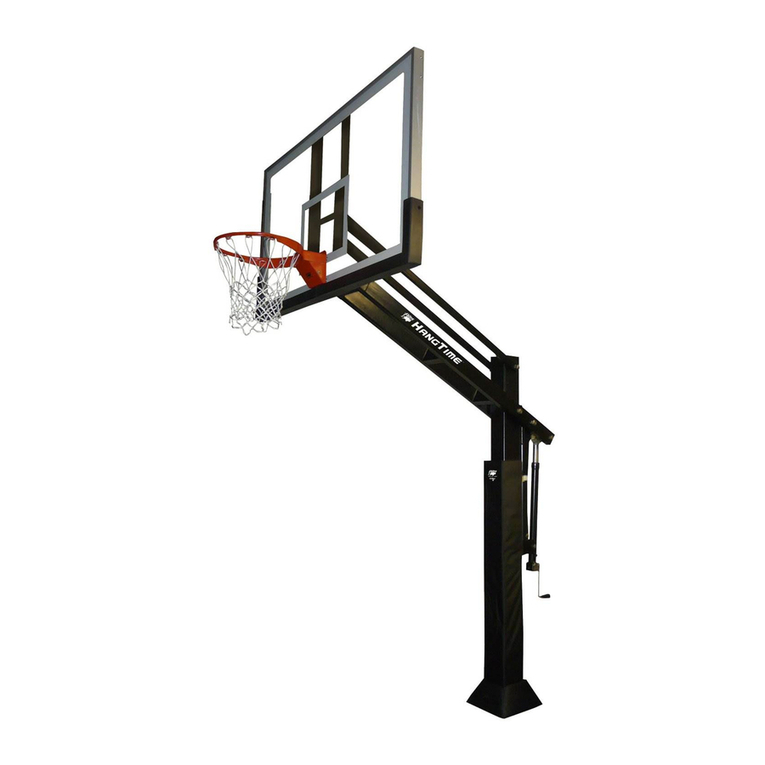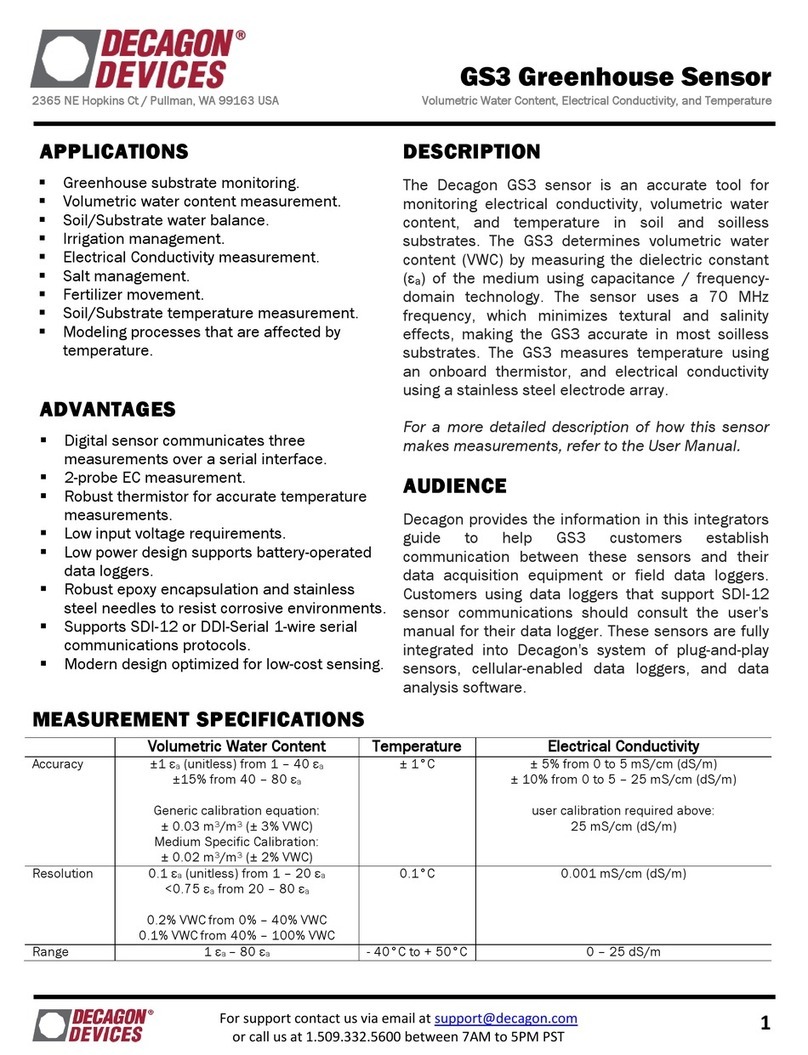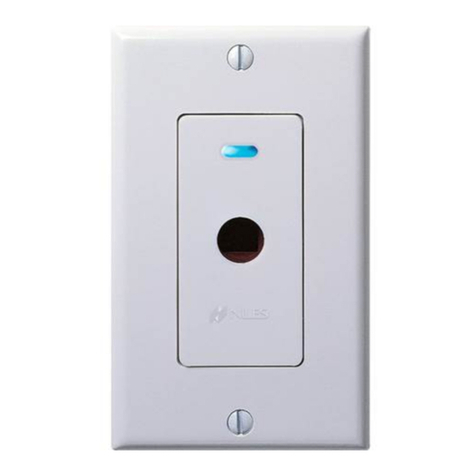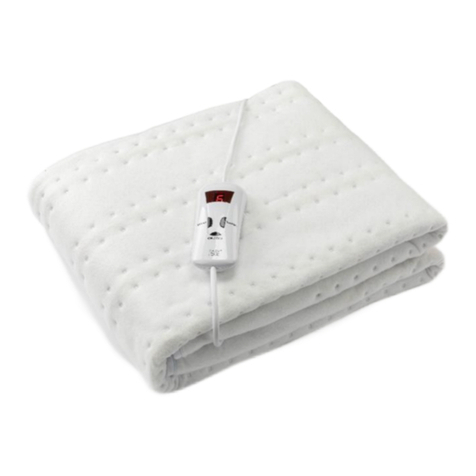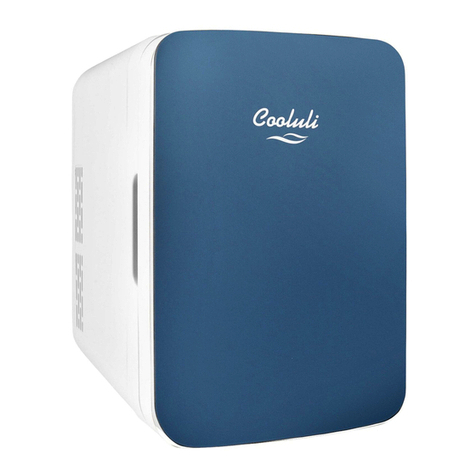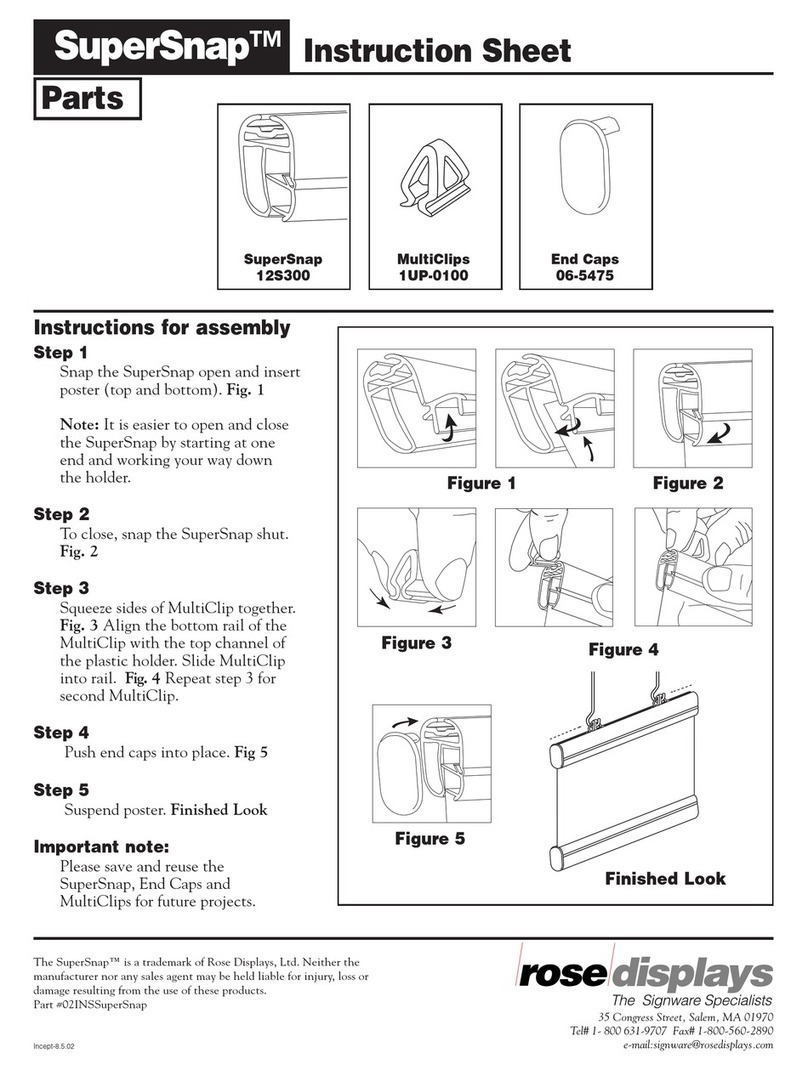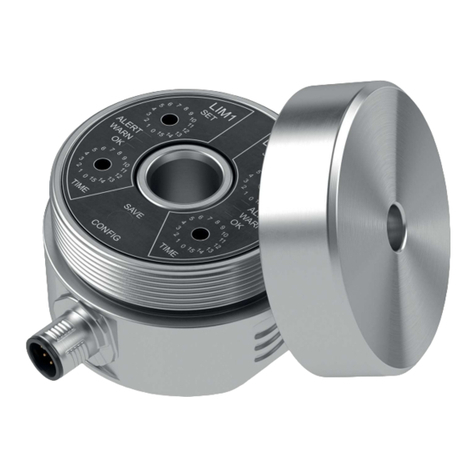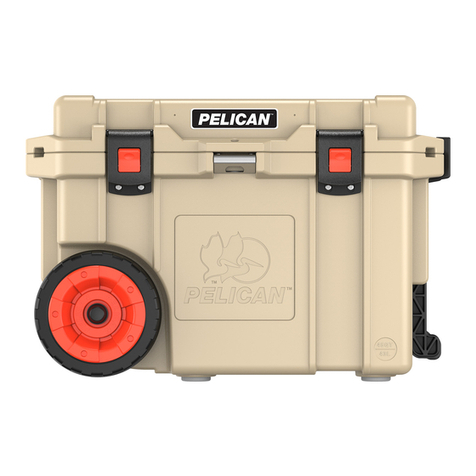GLH Systems Paragon User manual


WARNING
·BASE jumping is by nature extremely dangerous! You may be seriously injured
or killed.
·GLH Systems and all of its affiliates advise you to seriously consider the
potential consequences of your actions should you decide to pursue this sport.
·Do not use this equipment unless you accept full responsibility for any injury,
serious or otherwise, including loss of life.
·Do not use this equipment unless you have read and understand all warning
labels, owner’s manuals and packing instructions.
·Do not use this equipment unless you have had complete and controlled
instruction in the use of this parachute assembly.
·It is the owners and/or user’s liability and obligation to inspect the equipment
and all of its components to ensure they are fit for use before each and every
jump.
·The owner and/or the user of the equipment are reputed as having the
necessary knowledge and experience to practice BASE jumping.
·The possession and/or the use of this equipment are conducted under the
owners and/or users complete liability.
·In the event of any incident/accident, whatever the origin may be, GLH Systems
and all of its affiliates will decline any/all liability.
·The owner and/or user, by the simple use of this equipment, admits to having
taken knowledge of this warning and accepts and agrees to all of its terms and
conditions.
DISCLAIMER –WARRANTY
GLH Systems and its affiliates offer no warranty, expressed or implied, as to the
reliability or safety of any equipment or products that it sells, leases or gives away.
This equipment is sold without any guarantee of its quality or performance.

Contents:
Section: Pages:
1. Intro 3
2. Paragon, Paragon Lite and Paragon Deluxe 4 - 7
3. Packing the Avian Container 8 - 11
4. Pilot Chutes
4.1 Pilot Chute Sizing 12
4.2 Hand Held Pilot Chutes 13 - 14
4.3 Stowed Pilot Chutes 14 - 15
5. Pre-Jump Safety Checks 16
6. Component Assembly
6.1 Toggles; Attachment and Settings
6.1.1 Attachment Method 1 17
6.1.2 Attachment Method 2 18
6.1.3 Setting Your Brakes: Slider Off 18-20
6.1.4 Setting Your Brakes: Slider Up 20-21
6.2 Risers
6.2.1 Reverse 3 Ring Risers 22-24
6.2.2 Standard 3 Ring Risers 24-25
6.2.3 L-Bar Risers 27
6.2.4 Slider Retainer Strap 28
6.3 Bridle
6.3.1 Attaching the Bridle to the Canopy 29
6.3.2 Attaching the Pilot Chute to the Bridle 30
7. Inspections and Maintenance
7.1 Harness Inspection 31
7.2 Container Inspection 31
7.3 Riser Inspection 32
7.4 Bridle Inspection 33
7.5 Pilot Chute Inspection 33
7.6 Canopy Inspection 34
8. Contact Information 35

Section 1: Intro
ABOUT THIS MANUAL:
·GLH Systems offers these instructions to be used as a guideline only.
·This manual is NOT a description of how to start BASE jumping.
·This manual MUST NOT be your sole source of information.
·This manual is only designed to introduce you to the Paragon harness/container system. It is the
responsibility of the user to ensure that his/her container is properly assembled, maintained,
packed and operated.
·We recommend that you read and understand this manual in its entirety before using the Paragon
harness/container system.
·It is recommended to have a minimum of 250 skydives before even considering BASE jumping.
·It is recommended to receive proper instruction/training and supervision from a qualified person
concerning packing methods and general equipment use.
·It is recommended to have received practical instruction/training on BASE-jumping techniques
before attempting to use this equipment.
·Ultimately all responsibility lies with the user.
·The information and specifications that are included in this manual are in effect at the time of
printing. GLH Systems reserves the right to change any equipment that it offers at any time
without notice or obligation.
·If you have any questions concerning this equipment or its use please contact GLH Systems.

Section: 2
Paragon, Paragon Lite and Paragon Deluxe
Paragon [par-uh-gon] –noun; a model or pattern of excellence or of a particular excellence.

Packing the Paragon Harness/Container System:
The instructions set forth will serve equally when packing and closing the Paragon, Paragon Lite
and Paragon Deluxe Harness/Container Systems.
Before placing the canopy into the container, read this manual through from cover to cover. If
there is anything that you do not understand please do not hesitate to contact GLH Systems to
assist you with assembly and packing.
Step 1: Follow the canopy manufacturer’s instructions for packing the canopy until it resembles
the picture below (Figure 2.1a). Then fold the top flap and yoke area under the container (Figure 2.1b).
(Figure 2.1a) (Figure 2.1b)
Step 2: Grasp the canopy and the Tail Pocket so as not to disturb the stowed lines and slide the
cocooned canopy over and into the pack tray (Figure 2.1c). Place the canopy at the bottom of the
container lining the Tail Pocket up with the lower corners (Figure 2.1d). The canopy should be
positioned so that the Tail Pocket fills the bottom corners of the pack tray. Ensure that the risers
are not twisted and that the rear risers are towards the centre then fold the excess toggle
material towards centre of the container (Figure 2.1e).
(Figure 2.1c) (Figure 2.1d) (Figure 2.1e)

Step 3: Fold the canopy back on itself so that the top of the warning label appears then prepare
the nose as desired for your intended delay (Figure 2.1f). Ensure that the centre cell remains
exposed.
(Figure 2.1f)
Step 4: Fold the remainder of the canopy toward the top of the container using the bottom of
the pack tray as a guide (Figure 2.1g). This should put the top of the canopy approximately in the
center of the container.
(Figure 2.1g)
Step 5: Clear the top flap from under the container and place it over the canopy and feed the
pull-up cord through the top closing loop. Feed the pull-up cord through the top left grommet
(Figure 2.1h) and then through the top right grommet allowing the bridle to come out from the
centre over the left flap (Figure 2.1i). Place the pin that is closest to the canopy through the loop
from left to right ensuring not to twist the closing loop (Figure 2.1j).
(Figure 2.1h) (Figure 2.1i) (Figure 2.1j)

Step 6: Bring the bottom flap up over the canopy and feed the pull-up cord through the bottom
closing loop. Fold the dynamic corner inward and place this fold along the side of the container
between the container sidewall and the folded canopy (Figure 2.1k). Repeat for the opposite side.
Never fold the dynamic corner against the bottom flap. Never allow any part of the canopy to
become trapped between the dynamic corner and the side wall. Then repeat the closing
sequence for the bottom loop (Figure 2.1l) ensuring that the bridle has not been twisted between
the pins (Figure 2.1m).
(Figure 2.1k) (Figure 2.1l) (Figure 2.1m)
Step 7: Ensure the bridle passes directly from the bottom pin to the pilot chute (Figure 2.1n). The
bridle should then be tucked under the right side flap and fed neatly under the bridle protector
flap (Figure 2.1o). Close the pin protector flap taking care to keep the bridle in its central position
(Figure 2.1p). Proceed to the pilot chute section and follow instructions for the type of deployment
that you intend to use.
(Figure 2.1n) (Figure 2.1o) (Figure 2.1p)

Section 3: Avian
Avian [ey-vee-uhn] - adjective; of or pertaining to birds.

Packing the Avian Harness/Container System
The instructions set forth with serve in packing and closing the Avian, GLH Systems terminal
specific harness container. Some slight packing adaptations may be necessary to enhance the
contours of the container when using different brands of ultra light parachutes.
Before placing the canopy into the container, read this manual through from cover to cover. If
there is anything that you do not understand please do not hesitate to contact GLH Systems to
assist you with assembly and packing.
Step 1: Follow the canopy manufacturer’s instructions for packing the canopy until it resembles
the picture below (Figure 3.1a). Then fold the top flap and yoke area under the container (Figure 3.1b).
(Figure 3.1a) (Figure 3.1b)
Step 2: Grasp the canopy and the Tail Pocket so as not to disturb the stowed lines and slide the
cocooned canopy over and into the pack tray (Figure 3.1c). Place the canopy at the bottom of the
container lining the Tail Pocket up with the lower corners (Figure 3.1d). The canopy should be
positioned so that the Tail Pocket fills the bottom corners of the pack tray. Ensure that the risers
are not twisted and that the rear risers are towards the centre then fold the excess toggle
material towards centre of the container (Figure 3.1e).
(Figure 3.1c) (Figure 3.1d) (Figure 3.1e)

Step 3: Fold the canopy back on itself so that the floor plate closing loop becomes
accessible and thread a pull-up cord through loop (Figure 3.1f). Prepare the nose as desired for your
intended delay (Figure 3.1g). Ensure that the centre cell remains exposed.
(Figure 3.1f) (Figure 3.1g)
Step 4: Fold the remainder of the canopy toward the top of the container using the bottom of
the pack tray as a guide (Figure 3.1h). The ears of the canopy should pass to either side of the floor
plate closing loop.
(Figure 3.1h)
Step 5: Clear the top flap from under the container and place it over the canopy. Feed the pull-
up cord through the top flap grommet (Figure 3.1i). The ears of the canopy can be used to pad out
the top flap.
(Figure 3.1i)

Step 6: Feed the pull-up cord through the top left grommet (Figure 3.1j) and then through the top
right grommet allowing the bridle to come out from the centre over the left flap (Figure 3.1k). Place
the pin that is closest to the canopy through the loop from left to right ensuring not to twist the
closing loop (Figure 3.1l).
(Figure 3.1j) (Figure 3.1k) (Figure 3.1l)
Step 7: Bring the bottom flap up over the canopy and feed the pull-up cord through the bottom
closing loop. Fold the dynamic corner inward and place this fold along the side of the container
between the container sidewall and the folded canopy (Figure 3.1m). Repeat for the opposite side.
Then repeat the closing sequence for the bottom loop (Figure 3.1n) ensuring that the bridle has not
been twisted between the pins (Figure 3.1o).
(Figure 3.1m) (Figure 3.1n) (Figure 3.1o)
Step 8: Ensure the bridle passes directly from the bottom pin to the pilot chute (Figure 3.1p). The
bridle should then be tucked under the right side flap and fed neatly under the bridle protector
flap (Figure 3.1q). Close the pin protector flap taking care to keep the bridle in its central position
(Figure 3.1r). Proceed to the pilot chute section and follow instructions for stowing the pilot chute.
(Figure 3.1p) (Figure 3.1q) (Figure 3.1r)

Section 4: Pilot Chutes
Section 4.1: Pilot Chute Sizing
Pilot chute sizes can be roughly grouped into four delay brackets: 1) Short Slider Off Delays, 2)
Longer Slider Off Delays, 3) Short Slider Up Delays and 4) Terminal Slider Up Delays. Pilot
chutes will be constructed of either zero porosity or 0-3 cfm (F111) fabric. GLH Systems
recommends that jumpers learn about both types of pilot chute, advantages, disadvantages and
their practical applications. When using zero porosity pilot chutes smaller than 48”, apex venting
is strongly recommended to enhance PC stability and reduce potential PC oscillation throughout
the deployment sequence.
The following table (Chart 4.1a) is a basic reference for pilot chute sizes according to delays for
classic jumps. Correct pilot chute sizing is critical for a good opening so it is recommended that
each individual ascertain exactly what configuration works best for them. Too small of a pilot
chute can cause hesitations and possible line twists, too large and hard openings, centre cell
stripping, line dump and line overs are all possible. Pilot chute sizes will also need to be adapted
if tracking clothes or wingsuits are being used.
Altitude
(in feet)
Delay
(in seconds)
Pilot Chute Sizes
(in inches)
Pilot Chute Locations
Slider Types
<200
0
48” or 46”
Static Line or PCA
None
200
<1
48” or 46”
Hand Held
None
250
1
48” or 46”
Hand Held or Stowed
None
300
1-2
48” or 46” or 42”
Hand Held or Stowed
None
400
2-3
48” or 46” or 42”
Hand Held or Stowed
None
500
2-3
48” or 46” or 42”
Hand Held or Stowed
None
600
4
42” or 38”
Stowed
Large Mesh
700
4
38” or 36”
Stowed
Large Mesh
800
4-5
38” or 36”
Stowed
Large Mesh
900
5-6
38” or 36”
Stowed
Large Mesh
1000
6-7
38” or 36”
Stowed
Mesh
Large or Small
1500
7-10
36” or 34” or 32”
Stowed
Mesh
Large or Small
1500+
10+
36” or 34” or 32”
Stowed
Mesh
Large or Small
(Chart 4.1a)
WARNING: The use of a skydive type sail slider is NOT recommended for BASE jumping due to
inconsistent opening speeds and un-reliable heading performance.
Note: This chart has been provided as a reference only. It is wise to consider all factors in each
particular jump when deciding on deployment options. Many variables including the object itself
or even the landing area may influence your choice of delay and equipment.

Section 4.2: Hand Held Pilot Chutes
Step 1: After gearing up and completing all of your safety checks grasp your bridle in your right
hand. Ensure that the bridle passes directly from your bottom pin into the top of your hand to
avoid any obstructions that could cause a pilot chute in tow (Figure 4.2a).
(Figure 4.2a)
Step 2: Raise your arm to your exit position to gauge the necessary excess (Figure 4.2a) and then
S-Fold the remaining bridle into the palm of your hand (Figure 4.2b). Continue to S-Fold the entire
pilot chute into your hand ensuring that the center line remains fully extended (Figure 4.2c). The
length and number of S-Folds can be adjusted to reduce the bulk in your hand.
(Figure 4.2b) (Figure 4.2c) (Figure 4.2d)
Note 1: After extending your arm and gauging the necessary bridle excess some people will
then place a small tuck of the bridle at their shoulder (Figure 4.2e) to control the excess bridle until
exit (Figure 4.2f).
(Figure 4.2e) (Figure 4.2f)

Note 2: While GLH Systems recommends S-Folding the entire pilot chute into your palm for
exit, some people prefer to stop the S-Fold after the pilot chute mesh (Figure 4.2g). This will leave
the ZP of the pilot chute to mushroom over the top of your hand (Figure 4.2h). GLH Systems sees
no advantage to this method and will leave it to the user’s personal preference.
(Figure 4.2g) (Figure 4.2h)
WARNING: It is imperative that the bridle passes from the bottom pin directly into the top of
your hand without passing through or around anything that could cause a pilot chute in tow
malfunction. Also while utilizing the hand held method extra care and attention needs to be
taken to prevent you from prematurely dislodging your bottom pin prior to jumping.
Section 4.3: Stowed Pilot Chutes
Step 1: Pack your chosen pilot chute into a mushroom with the PC apex at the top. Place the
mushroom on the ground so that it resembles the picture below (Figure 4.3a). Ensure that the
centre line remains fully extended throughout the entire process.
(Figure 4.3a)

Step 2: S-Fold the pilot chute mesh on top of the pilot chute fabric. Generally one fold should
suffice. Continue to S-Fold the bridle on top of the mesh (Figure 4.3b). You will need to leave
approximately 30cm of bridle at the bottom of the container.
(Figure 4.3b)
Step 3: Bring the mushroom shaped fabric down over the S-folded mesh and bridle (Figure 4.3c).
Work the air out of the fabric, keeping folds tidy. The bridle attachment point and the start and
finish of each S-fold should be incorporated into the pilot chute apex area. This will provide
something to grip onto when deploying a pilot chute without a handle. The length and width of
the pilot chute should be approximately the same as the BOC pilot chute pocket (Figure 4.3d).
(Figure 4.3c) (Figure 4.3d)
Step 4: Stow the packed pilot chute and the excess bridle into the BOC pocket. The excess
bridle will help the pilot chute to extend from the pocket without tension. Tuck any excess bridle
coming from the pouch under the bridle protector flap (Figure 4.3e).
(Figure 4.3e)
WARNING: DO NOT use any form of packing tools while stowing your pilot chute. Failure to
remove such tools before jumping will almost certainly result in a pilot chute in tow malfunction.

Section 5: Pre-Jump Safety Checks
GLH Systems specialize in single parachute systems. It is therefore a wise decision to get into
the habit of methodically checking your equipment before each and every jump. All equipment
checks should be completed before gearing up. It is even better if a 2nd experienced person is on
hand to verify your safety checks after you gear up. While conducting your checks it is best if
you follow a pattern of some sort (either from top to bottom or front to back) to ensure nothing
is overlooked. Your checks should include but are not limited to:
Equipment Checks:
·Check under the pin protector flap. Make certain that the pins are set properly.
Generally this would mean that approximately 3/4 of the pins are through the loops.
·Check that the bridle comes out from between both pins and goes directly to the top pin.
·Check that the bridle is not twisted between the two pins.
·Check the routing of the bridle. Be certain that it goes from the bottom pin directly under
the bridle protection flap and into the BOC for stowed jumps.
·Alternatively, check that the bridle is clear from the bottom pin to the pilot chute for hand
held jumps.
·Check that the 3-Ring System is assembled correctly. Make certain that the white loop
passes through the small ring, the two grommets and that the yellow cable goes through
the loop to lock the system.
·Check that there is plenty of excess yellow cable inserted into the channel provided on the
rear riser.
·Check that the cutaway handle is securely mated to its Velcro.
Pre-Jump Checks:
·Check the chest strap is secure and threaded correctly. Stow any excess webbing in its
keeper.
·Check your leg straps are secure and stow any excess.
·Check that the main lift webs are not twisted.
·Check that the cutaway handle is still securely attached to its Velcro.
·If jumping stowed, check that nothing will interfere when reaching for your pilot chute.
·If jumping hand held, check that the bridle passes from the bottom pin directly into the
top of your hand without passing through or around anything that could cause a pilot
chute in tow malfunction.
·If jumping a static line, check that the bridle passes from the bottom pin directly to your
static line attachment without passing through or around anything that could cause a pilot
chute in tow malfunction.
·Finally, check that there is nothing that could possibly snag or interfere with the bridle or
pilot chute during deployment i.e. clothing, protective gear, camera mounts etc.
Note: These safety checks focus only on the equipment to be jumped. GLH Systems strongly
recommends that jumpers also seek instruction on site analysis to help them in determining all
the potential variables at different locations on any given day.

Section 6: Component Assembly
Section 6.1: Toggles; Attachment and Settings
Section 6.1.1: Toggle Attachment Method 1 (no attachment loop)
Step 1: Make a loop of brake line above the knot (Figure 6.1.1a) and thread it through the FRONT
SIDE of the toggle as shown below (Figure 6.1.1b) then pass the loop over the BOTTOM of the
toggle (Figure 6.1.1c).
(Figure 6.1.1a) (Figure 6.1.1b) (Figure 6.1.1c)
Step 2: Pull the excess line back through the grommet. The assembled toggle should
look like the figure below (Figure6.1.1d ). The excess line can be left hanging free to allow for
adjustment later on.
(Figure 6.1.1d)

Section 6.1.2: Toggle Attachment Method 2 (pre-installed attachment loops)
Step 1: Pass the control line through the toggle’s grommet from the Velcro side of the toggle
(Figure 6.1.2a) then thread the bottom of the toggle through the toggle attachment loop (Figure 6.1.2b).
(Figure 6.1.2a) (Figure 6.1.2b)
Step 2: Pull the slack brake line back through the grommet so that the assembled toggle looks
like photo below (Figure 6.1.2c).
(Figure 6.1.2c)
Section 6.1.3: Setting Your Brakes: Slider Off (Line Release Mod)
Step 1: Determine which brake setting will be used and place the white loop on the riser
through the cat’s eye loop on the control line (Figure 6.1.3a). You must ensure that matching brake
settings are used on both risers.
(Figure 6.1.3a)

Step 2: Pass the white riser loop through the riser guide ring (Figure 6.1.3b). When using the line
release mod Do Not pass the control through the guide ring.
(Figure 6.1.3b)
Step 3: Route the toggle stub through the white riser loop (Figure 6.1.3c) and then stow it into the
toggle keeper provided on the riser (Figure 6.1.3d).
(Figure 6.1.3c) (Figure 6.1.3d)
Step 4: S-fold the excess control line and stow it into the elastic keeper located on the front side
of the rear riser (Figure 6.1.3e).
(Figure 6.1.3e)
This manual suits for next models
2
Table of contents
Popular Accessories manuals by other brands

Gesslein
Gesslein F Series operating instructions
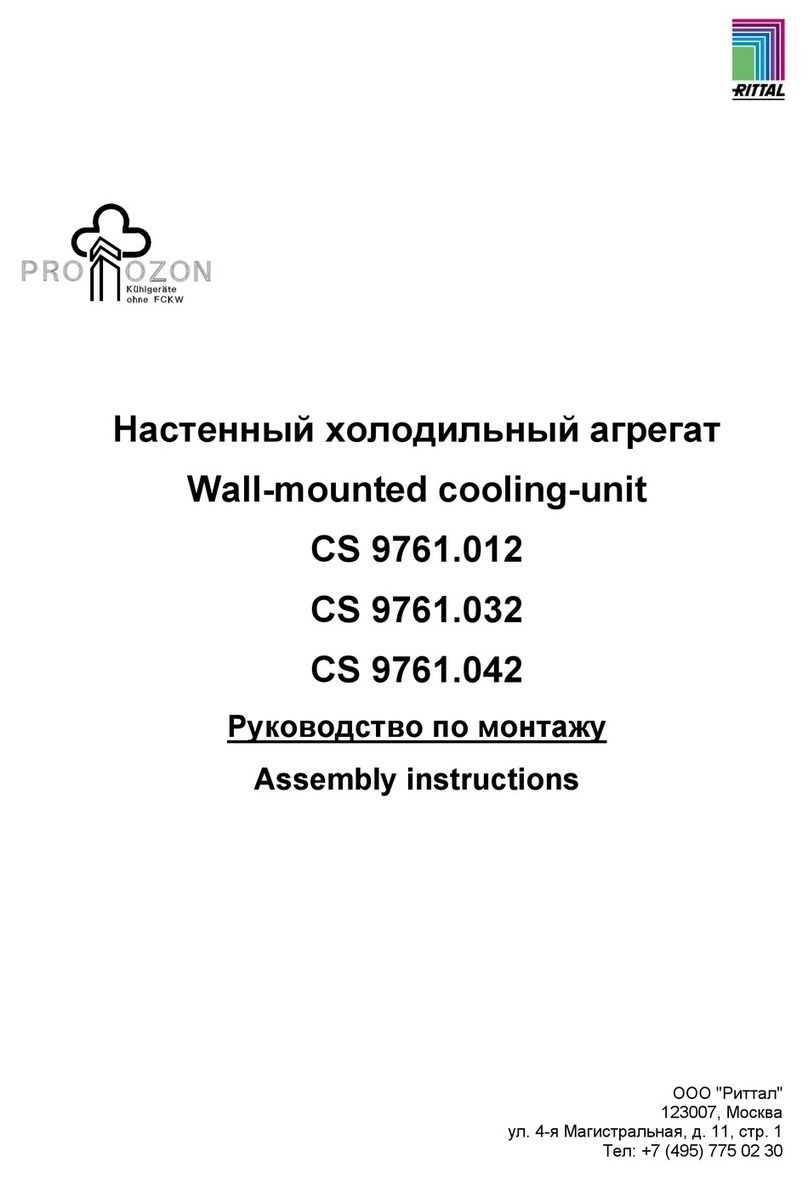
Rittal
Rittal CS 9761.012 Assembly instructions
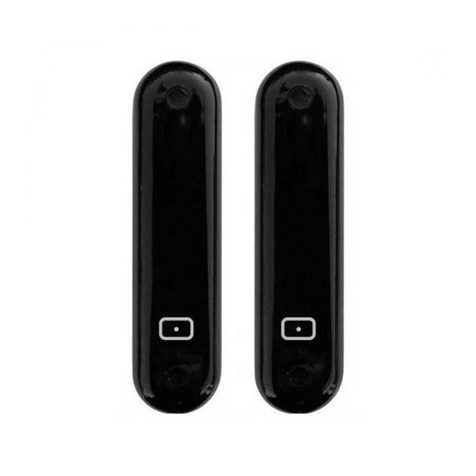
nologo
nologo ZOOM-LINE90 Instructions and warnings
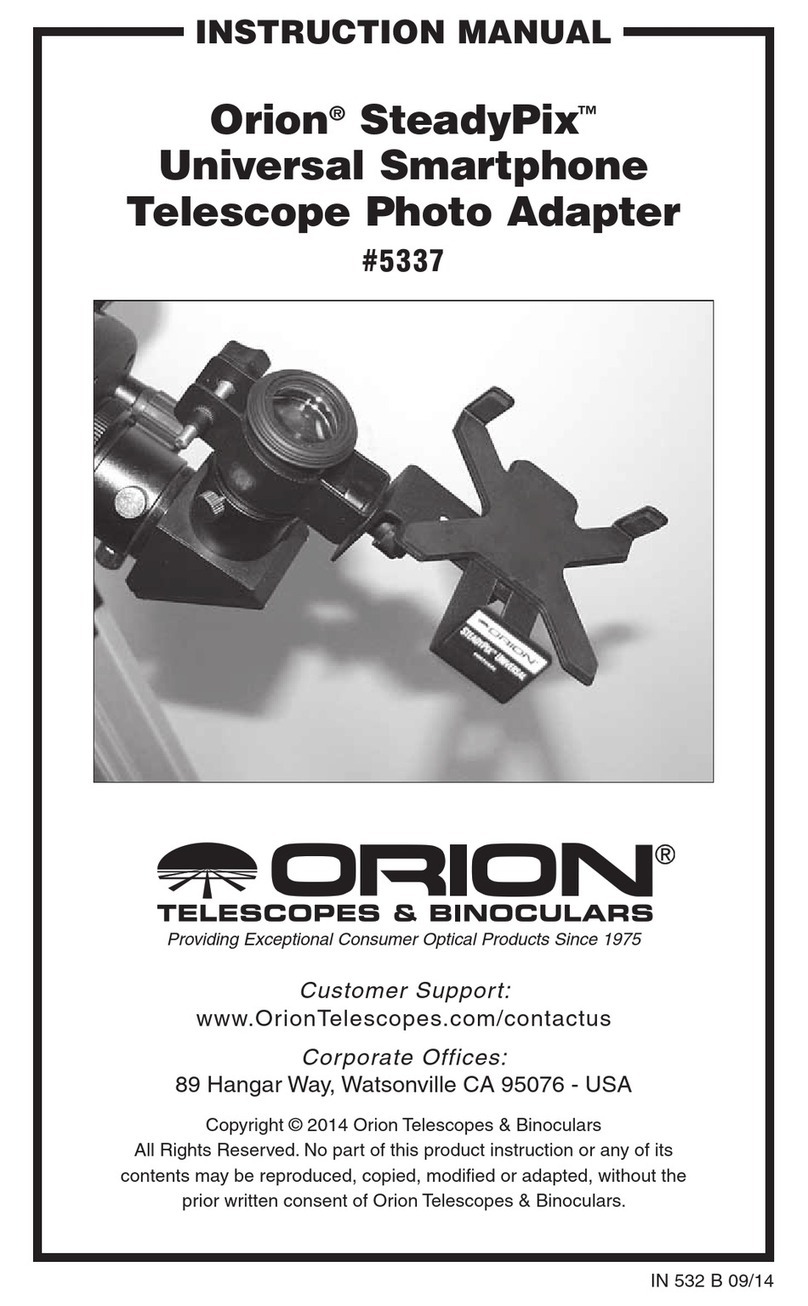
ORION TELESCOPES & BINOCULARS
ORION TELESCOPES & BINOCULARS SteadyPix 5337 instruction manual
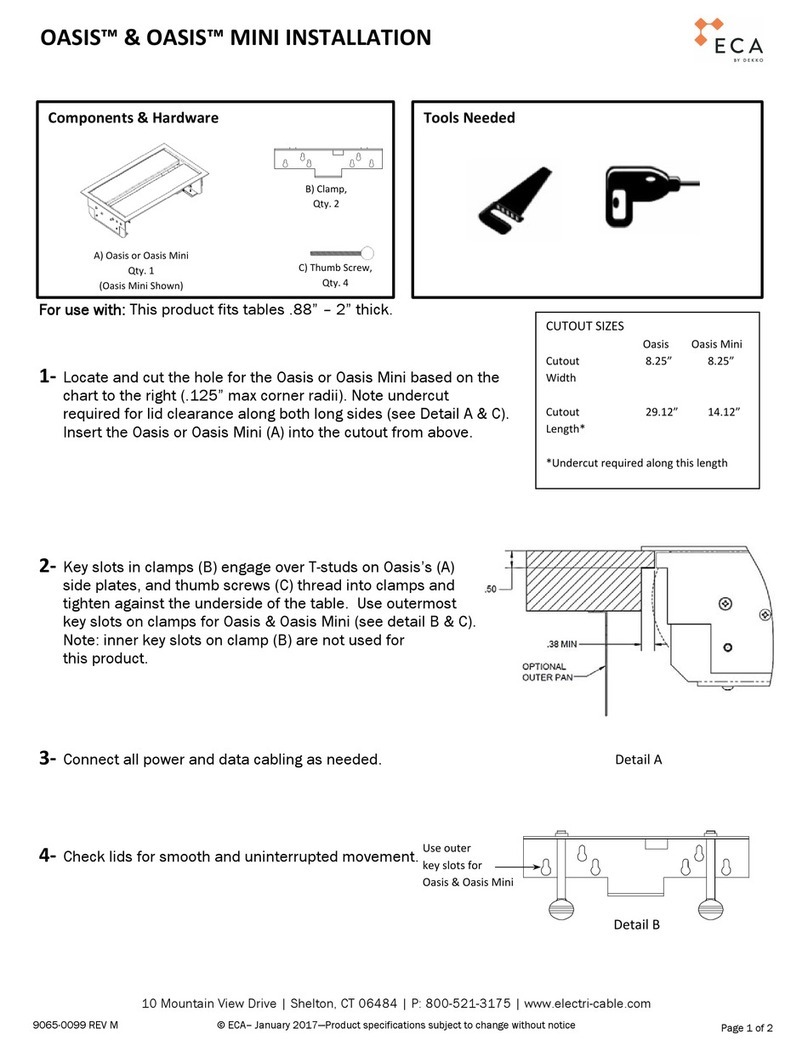
Dekko
Dekko ECA OASIS installation manual
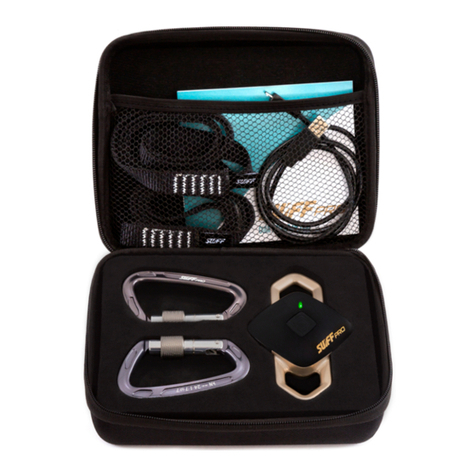
Suiff
Suiff Pro S2 user manual

